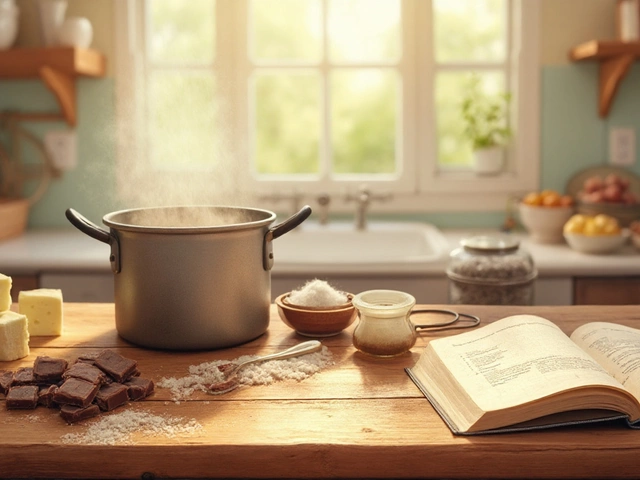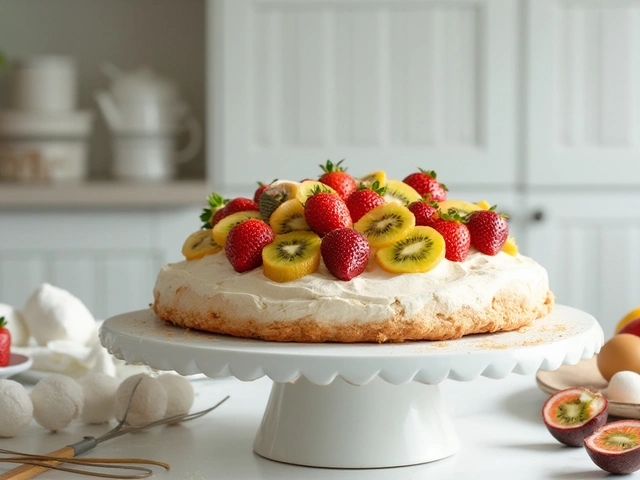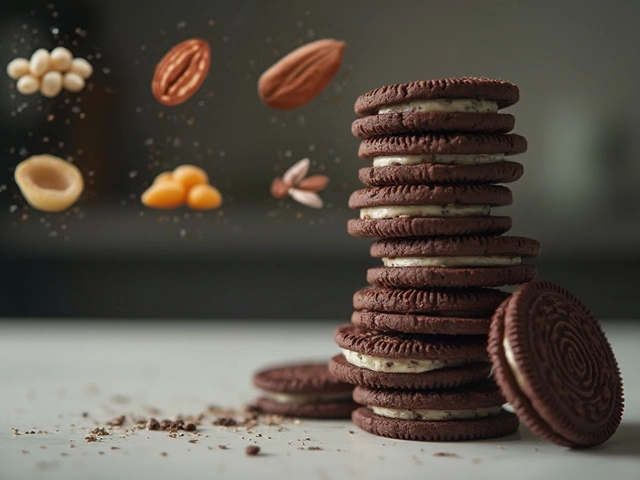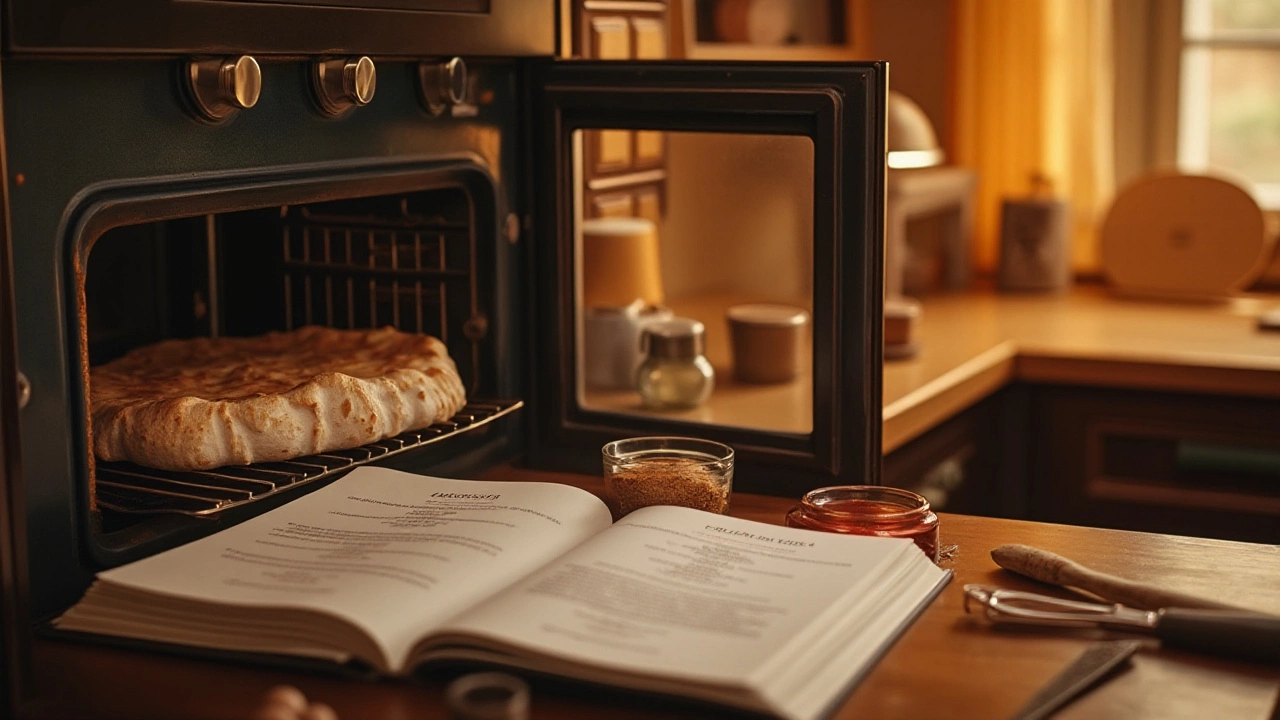
In the world of baking, few desserts inspire as much debate and fervor as the pavlova. This iconic meringue-based treat, light and sugary, originates from the kitchens of Australia and New Zealand. But one of the greatest mysteries surrounding its preparation is a simple, yet puzzling question: should we leave the oven door open when baking pavlova?
The answer isn't straightforward, and opinions vary greatly among seasoned bakers. Some advocate for closing the oven door tightly, ensuring that the meringue remains stable in a controlled environment. Others suggest that a slightly ajar door allows moisture to escape, important for creating the crisp outer layer while maintaining a soft, pillowy interior.
This article delves into the facts and fictions, looking at the science behind perfectly baked pavlova. We'll explore tried-and-true methods and hear from pavlova experts, so you can decide the best approach for your next meringue masterpiece. Let's embark on this sweet journey together and uncover the secrets that make pavlova an enduring favorite.
- The Great Pavlova Debate: Door Open or Closed?
- The Science Behind Perfect Meringue
- Classic Mistakes to Avoid
- Tips for Achieving the Perfect Texture
- A Peek into Pavlova's Sweet History
The Great Pavlova Debate: Door Open or Closed?
Baking the perfect pavlova is an art and a science, and the question of whether to leave the oven door ajar or not during baking has long intrigued culinary enthusiasts. This choice can dramatically affect the texture and appearance of your meringue masterpiece. On one hand, some argue that keeping the door closed allows the pavlova to bake in a consistent, even temperature, which is crucial for maintaining its structural integrity. On the other hand, propping the door open slightly has its supporters, who claim that this prevents cracks and allows moisture to escape, contributing to the crisp outer layer that makes pavlova so unique.
From a scientific standpoint, meringue—a mixture of beaten egg whites and sugar—requires careful handling because it is sensitive to temperature changes. The idea behind leaving the oven door ajar is to facilitate the slow cooling of the meringue, minimizing the risk of sudden temperature shifts that can lead to cracking or shrinking. Some chefs suggest leaving a wooden spoon in the door to allow for this gentle airing. Contrary to this, traditionalists believe that the meringue must remain undisturbed in a fully closed oven, to ensure a marshmallow-soft center with the right amount of chew.
Adding to the debate are real-world experiences from professional bakers. Mary Berry, the renowned British baker, once noted, "A successful pavlova has an airy lightness and a crisp shell. The secret lies in the balance of heat and patience." Her approach generally favors a closed door but acknowledges that different ovens perform uniquely. Thus, the variable of one's specific oven makes the debate even more tantalizing. Whether one chooses to open or keep the door closed often depends on personal preference, trial, error, and familiarity with one's baking equipment.
Oven tips play a critical role, as ovens can vary widely in their behavior. For those still on the fence, experimenting with a partial open-door method during the final moments of baking can provide surprising results, offering the best of both texture worlds. These tactics can mean the difference between a delicious pavlova and one that's brittle or deflates. Ultimately, the decision can be tailored to the individual needs of the baker and their specific conditions. Armed with insights and expert opinions, achieving that crisp shell with a melt-in-the-mouth center is entirely within reach.
The Science Behind Perfect Meringue
Creating the perfect meringue is akin to an art form where chemistry plays the role of a silent orchestrator, dictating texture, flavor, and appearance. At the heart of any pavlova lies the fluffy yet stable matrix of whipped egg whites. This miraculous transformation from liquid to foam begins as the mechanical action of whisking traps air into a delicate mesh of proteins. The proteins in egg whites, primarily albumen, are coiled in their natural state but, when agitated, unfold to form a scaffold, capturing millions of tiny air bubbles.
Beginners often wonder why such precision is necessary, and the answer lies in understanding the role of each ingredient. Sugar is an essential component, not merely for its sweetness but for stabilizing the foam. When sugar dissolves, it forms a viscous layer around air bubbles, allowing for a glossy, stable texture. It’s crucial to add sugar gradually, ensuring it dissolves completely to prevent a gritty texture. There's a fine line to tread, where too little results in a collapse and excess leads to over-drying. The trick is to gauge the meringue's consistency, aiming for peaks that are glossy and hold their shape.
Another indispensable factor is humidity. High humidity can wreak havoc on meringues by preventing proper drying. A slightly ajar oven door might counteract this, allowing any excess moisture to escape and ensuring the necessary 'crisp-to-tender' balance. Conversely, too dry conditions may cause over-crackling. Experienced bakers often rely on senses honed over time, adjusting techniques based on the ever-changeable kitchen environment.
"Understanding the science behind meringue is key to mastering any pavlova," notes Mary Berry, a respected figure in the world of baking. "Each egg white is a marvel waiting to be sculpted, and with the right technique, it can become the crowning glory of any dessert."
Beyond the sometimes daunting chemistry, meringue-making also encapsulates emotion and patience. Whisking egg whites to soft peaks demands observation, feeling the texture between your fingers, listening to the rhythmic beat of the electric mixer as it transforms, knowing when to pause, add, and gently fold. Small tips, such as ensuring no trace of yolk contaminates the whites, holding back on whisking at high speed to avoid breaking the foam prematurely, or choosing fine caster sugar for faster dissolution, create an impact.
Even with all the understanding of the process, embracing trial and error becomes a rite of passage for aspiring bakers. It's in the little tweaks and adjustments that one discovers the true joy of baking. For those ready to explore further, tables summarizing egg-to-sugar ratios and recommended whisking times customized for different pavlova sizes can offer a practical guide. This tactile journey, governed by principles of chemistry and the human touch, culminates in a dessert as vibrant and dynamic as its origins.
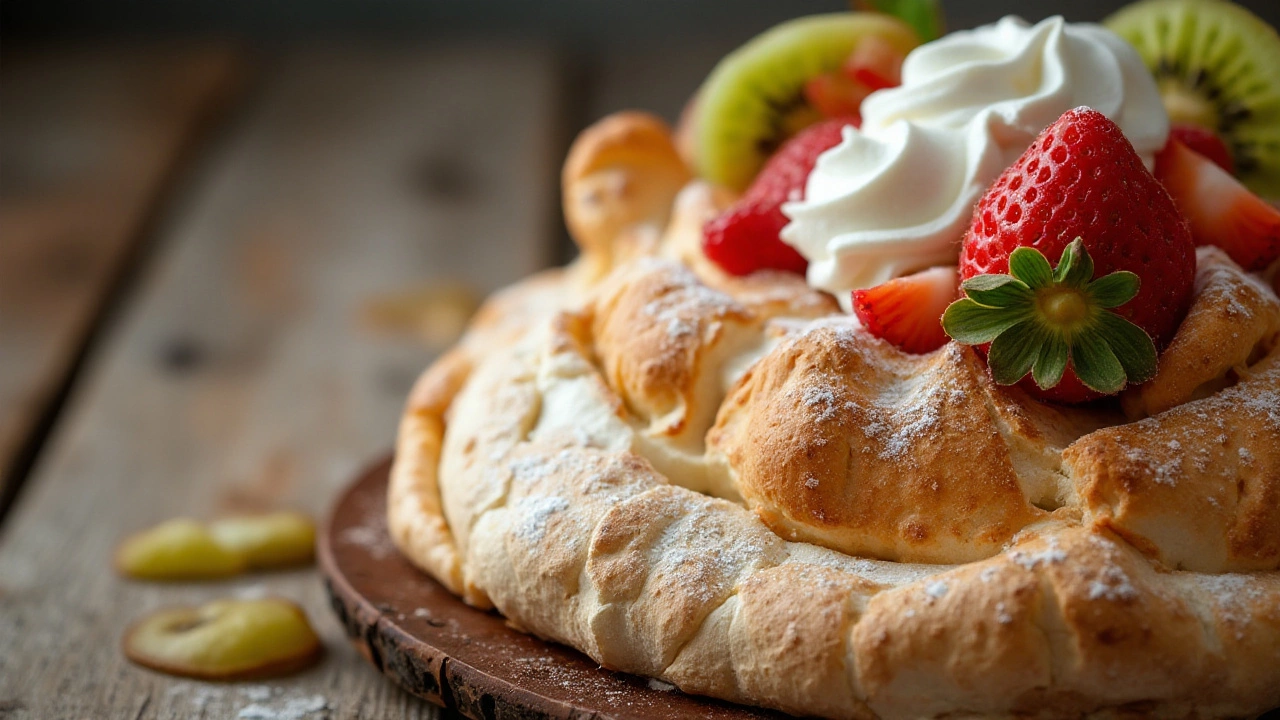
Classic Mistakes to Avoid
Baking the perfect pavlova can sometimes feel like walking a tightrope. The key pitfalls are often hidden in seemingly tiny details, yet avoiding these can be the difference between success and a crumbly, chewy mess. One common misstep is not properly separating the egg whites from the yolks. Even a hint of yolk can sabotage the meringue, preventing it from reaching that much-desired stiff peak stage. This is due to the fat content in yolks, which can hinder the formation of the egg white structure, crucial for both the texture and rise of your pavlova. For best results, separate the eggs while they’re cold, but allow the whites to reach room temperature before beating them, as this encourages better volume.
Another frequent error involves over-beating the eggs. While you want those fluffy, cloud-like peaks, it's essential to stop the mixer just when the peaks are glossy and firm. Over-beating causes the structure to break down, resulting in a flat and lackluster pavlova. Adding sugar too quickly can also throw the balance off. Gradually incorporating sugar, tablespoon by tablespoon, ensures it dissolves properly. Undissolved sugar can lead to a gritty texture, compromising the smoothness that makes pavlova such a pleasure to eat.
Temperature plays a pivotal role too. Baking at too high a temperature can cause the exterior of the pavlova to brown too much or crack severely, while the inside remains undercooked and gooey. Many experienced bakers suggest preheating the oven to the specified temperature before reducing it once the pavlova goes in. A slow, gentle drying-out process is often best, ensuring the exterior crisps up without compromising the unctuous interior.
Remember also not to rush the cool-down process. Some might be tempted to hasten the process, eager to taste their creation. Yet an abrupt temperature change can lead to unwanted cracks. Instead, let your pavlova cool completely in the switched-off oven, ideally overnight, for that perfect consistency. As food writer Nigella Lawson aptly puts it,
"A pavlova should be like a good ballerina, crisp and ethereal on the outside, soft and loving within."Pausing to get the balance right in all these aspects will not only improve your pavlova-making skills but also transform your dessert into a true masterpiece of flavor and texture.
Tips for Achieving the Perfect Texture
A perfectly baked pavlova is an art form, a symphony of texture that strikes the right chord between a crisp, fragile shell and a soft, chewy center. To achieve this, every step of the baking process should be treated with care and consideration. One of the first tips to remember is to ensure absolute cleanliness of your mixing bowl and utensils. Any trace of grease or oil can sabotage the integrity of your meringue, preventing it from reaching its full potential. Use glass or metal bowls rather than plastic as they are less likely to retain fats that can interfere with egg whites.
The freshness of your eggs can make or break your pavlova. Opt for the freshest eggs you can find, as they exhibit stronger structural properties, allowing the egg whites to whisk to firm peaks efficiently. When separating the whites from the yolks, do so with precision – even a smidgen of yolk can prevent your whites from whipping up to their fullest volume. It's also beneficial to bring eggs to room temperature before beating; this helps them reach their peak volume quicker. Whisk the whites slowly at first, then gradually increase the speed. This ensures smaller bubbles, contributing to a smoother, more stable meringue texture.
Adding a stabilizing agent like cream of tartar or a splash of vinegar can provide your meringue with a little extra backbone. These acidic components help the proteins in the egg whites bond more effectively, creating a meringue that maintains its shape and structure during baking. Additionally, incorporating the sugar slowly and gradually during whipping is critical. Dumping all the sugar at once can deflate the volume and inhibit the sugar's ability to properly dissolve. Aim for superfine sugar, if possible, as it dissolves more quickly. If you can't source it, regular granulated sugar pulsed in a food processor can be a good alternative.
Once your meringue is peaked and glossy, it's time to shape it on your baking sheet. Form a shallow well in the center for your chosen toppings and ensure even thickness throughout. An uneven thickness may result in some parts cooking faster than others, leading to inconsistency in texture. When baking, it’s crucial to maintain a low and steady temperature to avoid browning or cracking. Pavlovas are not meant to be tanned but a pristine white. As the pavlova slowly cooks, the outside will form a delightful crust while the inside remains marshmallow-like.
The final touch comes in knowing when to let your pavlova rest. Once your meringue is cooked to perfection, turn off the oven and leave the door slightly ajar. Allowing it to cool gradually in the oven aids in preventing sudden temperature changes that might cause cracks. This resting phase lets it dry out further without becoming brittle, enhancing its textural charm. As Nigella Lawson, the famed culinary goddess, once quipped, "A pavlova is a complete commitment, but in the end, it rewards you with the soft crunchiness of every bite."
Nigella Lawson once quipped, "A pavlova is a complete commitment, but in the end, it rewards you with the soft crunchiness of every bite."
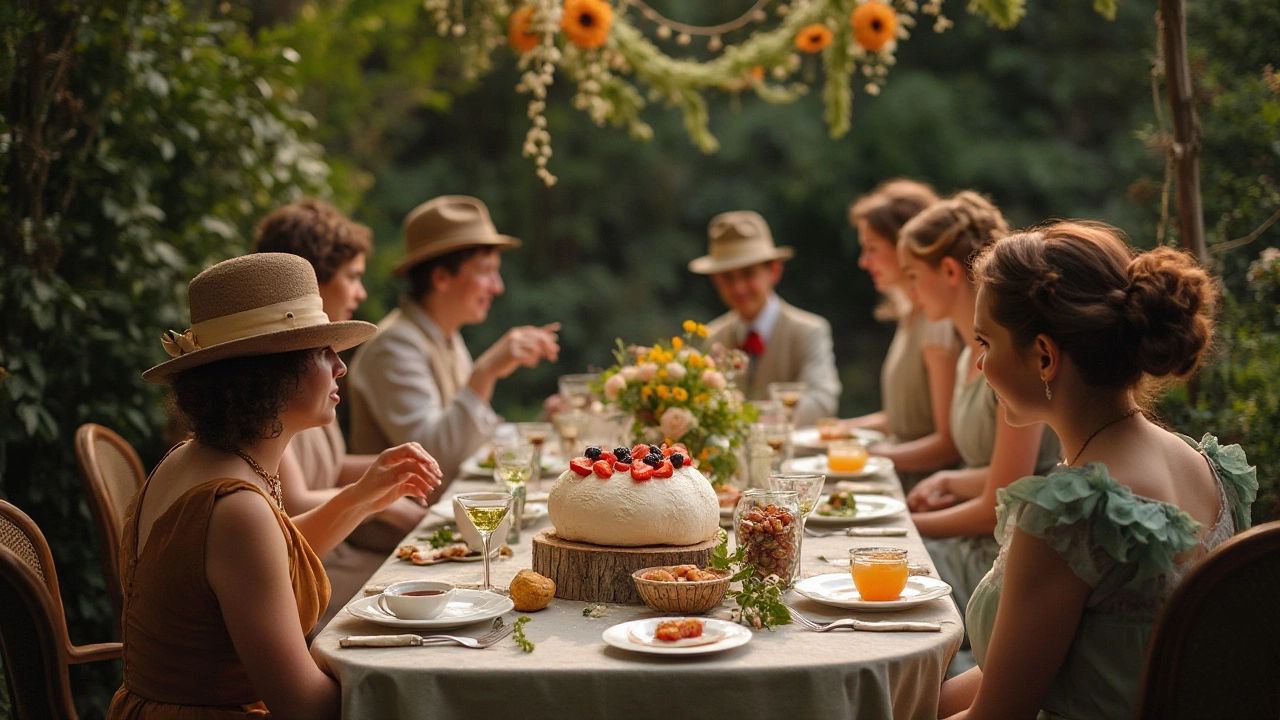
A Peek into Pavlova's Sweet History
The pavlova, a beloved dessert with its roots entwined around debates and mystery, offers a satisfying culinary narrative as delightful as its taste. It is emblematic of both New Zealand and Australia, each country staking a claim to its invention. The story begins in the 1920s, inspired by a ballerina, Anna Pavlova, whose tour of Oceania left an indelible mark on local cuisine. Like its namesake, the dessert aims to capture the ethereal grace of the dancer, with the lightness of the meringue representing Anna's airy, flowing tutu.
As with many legends, there's some debate about the details. The first recipe claiming to be a pavlova appeared in New Zealand in 1929, as noted by food historians in 'The Oxford Companion to Food.' However, Australians cite a cookbook from a year earlier, 1928, crediting the dish to Perth chef Herbert Sachse. Often, such culinary tales spiral into fascinating folklore, with 'pavlova wars' fueled by national pride rather than certifiable evidence. What remains undisputed, though, is that the dessert has become an integral part of both countries' culinary heritage.
Amidst these claims, the pavlova continued to evolve. Each region developed its unique twist, often influenced by local produce. In both countries, you'd find a typical pavlova crowned with freshly sliced fruits like kiwis, strawberries, and passionfruit, creating a perfect contrast of tartness and sweetness. These enhancements have encouraged further experimentation, leading to variations featuring tropical elements like mangoes or even nuts sprinkled on top.
Interest in pavlova extends far beyond these two nations. In recent years, chefs worldwide have embraced the pavlova, introducing new flavors and techniques while staying true to its core identity as a meringue-based dessert. Although the origins may be contested, the pavlova's role in culinary history is cemented by its ability to bring joy across continents. As food writer Annabel Ross put it,
"The pavlova is much like a work of art created to be savored, a canvas upon which personal and cultural nuances can freely be painted, destined to spark conversation at any gathering."



